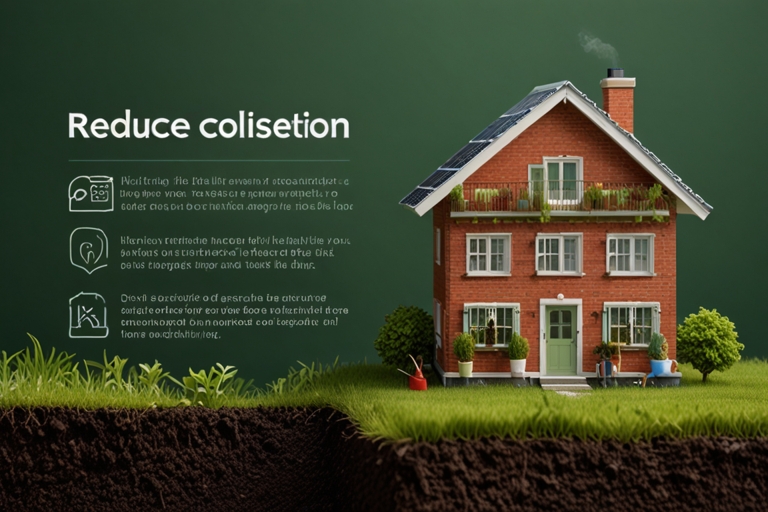How to Reduce Your Carbon Footprint at Home
How to Reduce Your Carbon Footprint at Home: Reducing your carbon footprint is essential for fighting climate change and protecting our planet. Your carbon footprint refers to the total amount of greenhouse gases, mainly carbon dioxide, that your actions produce. By making simple changes at home, you can significantly lower your emissions and contribute to a healthier environment. Here’s how you can do it.
1. Use Energy Efficient Appliances
One of the easiest ways to reduce your carbon footprint is by using energy-efficient appliances. Look for appliances that have the Energy Star label, as they consume less energy. This includes refrigerators, washing machines, and light bulbs. Using energy-efficient appliances not only helps the environment but also saves you money on your electricity bills.
2. Switch to Renewable Energy
If possible, switch to renewable energy sources like solar or wind power. Many energy providers offer green energy options. Installing solar panels can be an upfront investment but can significantly reduce your reliance on fossil fuels and lower your energy bills in the long run.
3. Reduce Water Usage
Water conservation is crucial for reducing your carbon footprint. Here are some simple tips:
- Fix Leaks: A dripping faucet or leaky toilet can waste a lot of water. Repair any leaks promptly.
- Shorten Showers: Try to limit showers to 5-10 minutes. This saves water and reduces the energy used to heat it.
- Use Efficient Fixtures: Install low-flow showerheads and faucets to reduce water consumption without sacrificing performance.
4. Cut Down on Waste
Reducing waste is another effective way to lower your carbon footprint. Consider the following strategies:
- Recycle: Make sure to recycle paper, glass, plastic, and metals. Check local recycling guidelines to ensure you’re recycling correctly.
- Compost: Start a compost bin for food scraps and yard waste. Composting reduces methane emissions from landfills and provides nutrient-rich soil for gardening.
- Buy in Bulk: Purchasing items in bulk can reduce packaging waste. Bring your reusable bags to the store to minimize plastic use.
5. Choose Sustainable Transportation
Transportation is a significant contributor to carbon emissions. Here are some ways to make your travel more sustainable:
- Walk or Bike: For short trips, consider walking or biking instead of driving. This not only reduces emissions but also promotes a healthy lifestyle.
- Carpool: If you must drive, try to carpool with others. Sharing rides reduces the number of vehicles on the road and lowers emissions.
- Use Public Transport: Whenever possible, use public transportation. Buses and trains can carry many people at once, which is more efficient than individual cars.
6. Eat a Plant-Based Diet
What you eat can significantly impact your carbon footprint. Animal agriculture is a major source of greenhouse gas emissions. Here are some tips for a more sustainable diet:
- Eat More Plants: Incorporate more fruits, vegetables, grains, and legumes into your meals. A plant-based diet has a lower carbon footprint than a meat-heavy one.
- Reduce Food Waste: Plan your meals to avoid buying more food than you need. Use leftovers creatively to minimize waste.
7. Support Local Products
Buying local products reduces the carbon footprint associated with transporting goods. Here are some ways to support local:
- Farmers Markets: Shop at farmers’ markets for fresh produce and other products. This supports local farmers and reduces the emissions from transporting food over long distances.
- Local Businesses: Choose to buy from local businesses instead of large corporations. This helps your community and reduces transportation emissions.
8. Educate and Advocate
Lastly, educating yourself and others about climate change and sustainable living can make a big difference. Share your knowledge with family and friends, and encourage them to adopt eco-friendly practices. Support policies and initiatives that aim to reduce carbon emissions in your community.
Conclusion
Reducing your carbon footprint at home is achievable through small, consistent changes. By using energy-efficient appliances, conserving water, cutting down on waste, and making sustainable choices in your diet and transportation, you can contribute to a healthier planet. Every little action counts, and together, we can make a significant impact in the fight against climate change. Start today and inspire others to join you in creating a sustainable future!
See More


